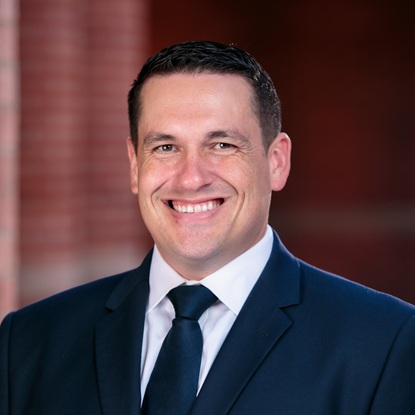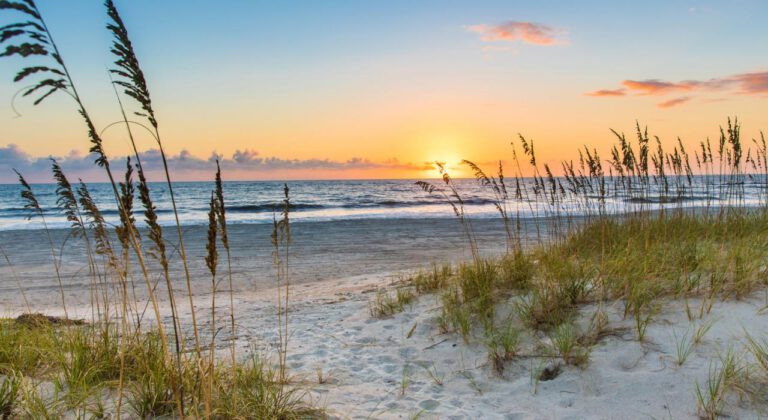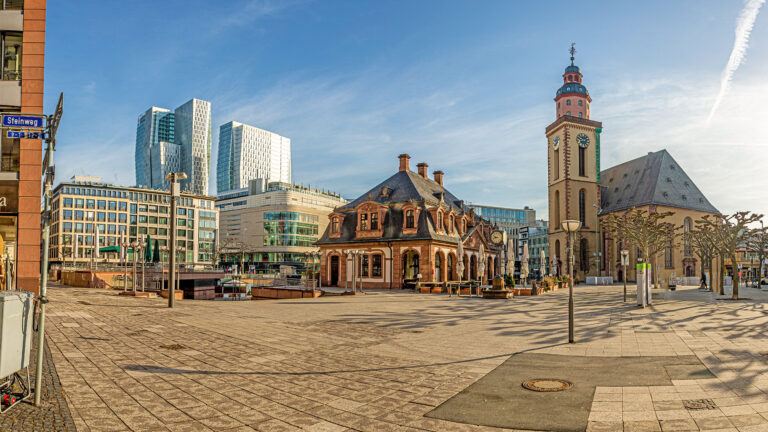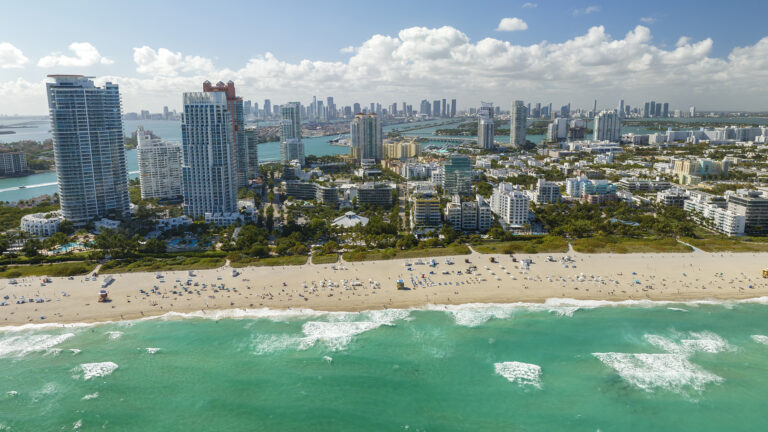Watch the full video here: https://youtu.be/dsLWsJ4dbrI
Transcript:
Christine Giordano: I’m here with Frank
Mihail. He is the Chief Investment Officer of the North Dakota Department of
Trust Lands. That’s a $7 billion fund that’s responsible for 2.6 million acres,
as well as 706,000 surface acres. Now, 17,400 of them produce oil and gas
wells. Since 2014, this fund has contributed $2 billion to K-12 education in
the state.
Interestingly enough, because of the high correlation to minerals and
exposures to energy and such, the fund has divested from energy, from
agriculture, from livestock, from industrial metals and precious metals since
2020, because of their high correlation. Now, Frank here, thank God, is an
expert from his former experience with hedge funds and all sorts of things that
we will get into. His first year of returns, now he just started in 2023. His
first year of returns garnered 9.4% for the fund. Welcome, Frank.
Mihail: Thanks,
Giordano. Pleasure to be here.
Giordano: Same.
I was hoping that we can go into exactly what kind of background primed you for
this position. Let’s start with your career.
Mihail: Sure.
Actually, I was thinking I could start at the very beginning. I think it gives
a good framework for the career background. My family is your classic immigrant
story. My father immigrated from Greece in the 1960s, with a fifth-grade
education and a dollar in his pocket. He started out as a dishwasher in
Greektown, Detroit, where he met my mother, a Jewish girl whose mother had fled
Vienna, Austria during the Holocaust. My mom and dad eloped. They moved to Los
Angeles, where I grew up. We were a typical blue-collar family. I didn’t have a
lot of career guidance growing up, but my parents trusted me to make my own
decisions, and they really encouraged me to do whatever made me happy.
When I was in high school, I was really good at math. I decided to
study mechanical engineering in college. That led me into oil and gas
engineering. It just wasn’t for me. I wasn’t passionate about it. I pivoted to
become a real estate agent. My timing wasn’t great. I think I joined right when
the subprime crisis hit, trying to sell real estate in Beverly Hills. My first
lesson in investing was calculating apartment building cap rates for clients. I
think that’s when I got the taste of really wanting to be in investing
and learn more about investing.
I pivoted from real estate sales to become a financial advisor at the
age of 30. I was hungry to learn. I got my CFA, took the GMAT, enrolled in an
MBA program. I ultimately left private wealth management to do an MBA
internship at a private equity shop in Los Angeles.
After finishing the MBA program is when I got the offer to join New
Mexico PERA. I moved from Los Angeles to Santa Fe and started covering hedge
funds at the New Mexico PERA plan. I did that for four years before coming up
to North Dakota to serve as the CIO.
Please Click Here to Register Now!
Giordano: In covering New Mexico and hedge funds, you actually were put in a very unusual
position of having to pull the trigger on quite a few funds in one year or over
the course of your experience there. Can you go into that and what you learned
from that?
Mihail: Yes,
it was a great experience. I was really lucky because I had no experience in
hedge funds when I got the opportunity to build a hedge fund book. When we
started building, it was right when COVID hit and there was a lot of
opportunity. We were trying to work at this breakneck pace and we were
allocating a lot really quick. I built a 10-strategy hedge fund book that
included every type of strategy you can think of from global macro, CTA, fixed
income RV, equity long short, merger ARB, multi-strats. I learned a lot very
quickly.
Giordano: What
did you take to this post here? Obviously, you’re now chief investment
officer, but I’m guessing that your experience with hedge funds really set you
up for a bit of success in this very turbulent economy. What’s your approach to
them now within this economy?
Mihail: Yes,
absolutely. I think hedge funds is a challenging asset class to learn. Starting
there, I think helps build a great framework to learn all asset classes, which
is what I cover now as a generalist for the fund. In terms of our hedge fund
book here, we’re doing things a little bit differently. We have a smaller team,
we’re a three-person investment staff, that’s all including operations as well.
We run a more concentrated book. We’ve got five line items here in our hedge
fund book. Directional strategies like global macro and CTAs, I think
they do serve a great purpose, which is adding uncorrelated volatility. We
actually don’t need more volatility and I can’t really stomach the double digit
drawdowns. We just stick with the multi-strats here. They’re able to print me
50 basis points a month, so I can sleep well at night.
Giordano: How
are you changing the fund’s structure or allocations since you’ve joined in
2023 and what are some of your goals ahead?
Mihail: Yes,
so we started a venture capital book that I’m really excited and proud of. One
of the other things we did is we’ve added long-short extension strategies to
our public equity book. I think of our public equity book as a barbell strategy
where we have half the book in passive indices and then half the book in these
high tracking error extension strategies. The middle portion, which is the traditional long-only active management, we don’t do any of it.
My goal for the portfolio is that these long-short extension strategies
hopefully can outperform during a bear market or a sell-off. Outside of that,
in other parts of the book, we generally think in core satellite framework. I
prefer investable benchmarks where I can find them because when your benchmark
is investable, it’s a true opportunity cost.
The beta can serve as a home base, and then you can build these alpha
satellites around it. For example, in our real estate book, we found a manager
who has made the ODCE real estate benchmark investable. We’ve allocated some
of our book to them. That’s the beta home base.
We have a couple of satellite strategies, a manager focused on the
industrial sector, and then a manager in the specialty sector, which I believe
both have secular tailwinds. We’re also lifting the hood right now on
some powered shell strategies, data centers for the real estate book. That’s
how we’ve changed the portfolio since I’ve been here.
Giordano: How
do you manage investments around all of these divestitures that your fund has
to do because of the correlations, the energy, the agriculture, livestock,
industrial and precious metals? I just learned that from your testimony
recently.
Mihail: Yes,
I just spoke on that this week. The history of the fund is, 10 years ago, we
did have an asset allocation bucket called diversified inflation strategies
that included TIPS, commodities, which is that blend of what you just
mentioned, energy, ag and metals. Then it also had MLPs. After reviewing it, the
board decided to divest because the correlation to our business side, which is,
again, bringing in oil and gas revenues from the mineral rights we own. That’s
all correlated to energy markets and oil prices. We divested from those
strategies and to replace it, we’ve added to other private market strategies
such as private credit and infrastructure.
Giordano: Okay,
what were the big performers for that 9.4% last fiscal year?
Mihail: Yes,
public equities by far, US and international, followed by hedge funds, private
credit and infrastructure, all did very well.
Giordano: Any
specific infrastructure projects that are catching your eye right now?
Mihail: I
think a lot of folks are talking about data centers and digital infrastructure.
We were looking at that space as well.
Giordano: Private
credit, I’m hearing a lot of buzz about that as well. What’s up there for you?
Mihail: Yes,
I think private credit, we continue to be bullish on. We think about it in
three sleeves, direct lending, asset-backed and opportunistic. We recently, in
2023, we did a distressed credit strategy in our opportunistic bucket. In 2024,
we did a private credit secondary strategy, which is a nascent
newer asset class that we’re really excited about. We’re going to continue to
allocate. We’re at 15% right now and our target is 20%. We’re going to continue
to allocate to private credit. We’re looking at asset-backed strategies in
2025.
Giordano: Again, we’re looking at hard structures there. How do you kick the tires on
these investments? You’re also invested in venture capital, right?
Mihail: Yes,
that’s right. Usually we’ll start with a short list from our consultant, RVK.
Stepping back and just thinking about the whole universe. I’ll also
pick up the phone and I’ll call my allocator peers. I’m a generalist. I like to
call my peers who are specialists, people who are dedicated to private credit
or private equity. I’ll get their recommendations.
I’ll do research on platform like Cobalt and then, sometimes if I hear
of a fund name that might be in an area we’re looking at and I don’t have the
contact info, I might have to cold call some investor relations reps on
LinkedIn. Thankfully when I cold call, I have about a 100% conversion rate
because I’m an allocator. I’ve been on the other side of sales and, it’s
usually like a, 99% failure rate of my cold calls when I’m on the sales side.
After, a dozen intro calls, we’ll usually filter down the managers
based on our portfolio fit and, sometimes that just means like vehicle type,
whether it’s closed end or evergreen. Once we select a manager, we’ll have
several meetings with that manager. We’ll look at their track record, stability
of the team, the terms that they’re offering in the fund raise. We have our own
proprietary DDQ that we’ll ask the manager to fill out. We’ll do an on-site
visit. RVK, our consultant, will supplement with all of the same and they will
draft the official investment due diligence memo that gets presented to our
board.
Giordano: I know this question puts you on the spot, so I apologize, but it’s often the
question on people’s minds. Is there a certain area in your fund that you’re
under-allocated and you’re seeking to flesh out?
Mihail: Where
we’re going to continue to allocate more? You mean? Yes. Yes, we’re
under-allocated to private credit and private equity, so we’re going to
continue to put money to work in those areas to try to get to target. It’s a
lot more challenging in private markets where you don’t have control of when
the capital gets called, so we’ve just got to be patient.
Giordano: Hearing
things about those. When you’re investing, do you have certain philosophies
around the potential tariffs and seeking alpha in a world of geopolitics?
Mihail: We
let our strategic asset allocation guide us, so I think the risk with tariffs
is that it could potentially cause inflation. My view is that, if you think
about how long it takes for data to work through the system, the COVID stimulus
was what sparked inflation in 2022 and got us where we are
today. That took like two years to work its way through the system. I think the
same thing is going to happen if tariffs drive inflation. We may not see that
data until Trump’s leaving office, and so right now we’re not making any
changes in the portfolio.
Even from a geopolitical standpoint, I think the risk is with
geopolitical uncertainty is also tied to probably oil prices and
inflation. We are in that blessed position where the business side of our
agency is in the oil business, and that’s the source of our revenue. It is a
hedge for us in that scenario, and so a good example is thinking about 2022
when broad equity and bond markets were both selling off. That was actually a
record-breaking year for our business side. We brought in record-breaking
revenues that year.
Giordano: In many ways, inflation tends to really help your fund.
Mihail: Yes,
I guess, it serves as a hedge because our portfolio, if we do get a drawdown,
the portfolio will still draw down, but we’ll see revenues coming in at the
same time.
Giordano: With
that in mind, are there investments that are as particularly
inflation-sensitive that you’re looking to scoop up while you can?
Mihail: I do
really like the infrastructure space right now. I think that
passes through a lot of that inflation risk, and so we’re
continuing to allocate in the infrastructure space.
Giordano: Fantastic.
Frank, in the interest of community here, is there a topic that you don’t mind
for other allocators, other CIOs to approach you on, if they wanted to pick up
the phone and get your feedback on something? Is there a thing that you don’t
mind discussing, noodling around, or coming in as an authority on?
Mihail: Yes,
I always welcome meeting other allocators, and I love all things portfolio, and
I can speak on every single asset class, whether someone wants to soundboard on
hedge funds or private credit, always happy to share ideas.
Giordano: Just
since it’s the beginning of the year, is there a big goal for this year, or a
big set of goals going forward? (Almost) Last question.
Mihail: Yes,
actually, I’ll give you short term and long term goals. Short term,
going back to what I was mentioning earlier about I prefer benchmarks that are
investable, because they’re a true opportunity cost. There’s a lot of asset
classes that don’t have investable benchmarks, and I think that’s a challenge
for the industry. I’ve been spending some time with some external partners to
try to think about how to design and build a better benchmark for
infrastructure. That’s something I’m working on this year. Right now-
Giordano: What
factors do you think it should take into consideration, as far as that
benchmark is concerned?
Mihail: Yes,
well, so right now, we use the MSCI World Infrastructure Index, which is public
equity risk. Right now, we have a mismatch, because we’ve got a public equity
benchmark versus private market investments. There’s a lot of allocators I’ve
talked to who use like CPI plus a hurdle, and that doesn’t really meet that investable criteria. There’s a few benchmarks out there that are
private market benchmarks, but they’re up the risk curve more in the value-add
opportunistic space, whereas our portfolio is mostly lower risk core
investments. That’s where we’re looking to design and build a benchmark
around.
Giordano: I
didn’t mean to cut into your goals, but go ahead.
Mihail: Yes.
That’s on the short-term goals. On the long-term goals, at the
state level the goal is to increase distributions to our beneficiaries
and grow the corpus of the fund incrementally by adding alpha. When I
think about how we can do that, it’s trying to reduce drawdowns using
alternative investments. Our portfolio is, we’ve got 15% in long-short hedge
funds, and then 15% in those long-short extension public equity strategies.
Putting that together, that’s 30% long-short. We’ve also got 8% target to
private equity, 20% to private credit, 10% to real estate, and 7% to
infrastructure. That together adds to 45% in private markets.
You combine the 45 with private markets and 30 from long-short, that’s
75% alternatives. The other 25% of our plan is passive indices. We use mostly
evergreen structures or have a preference for evergreen structures. What that
does is that actually puts us in a position where 90% of our portfolio offers
some kind of liquidity option, even though we’re 75% alternatives.
Structuring the portfolio in that way, the goal is to reduce those drawdowns
and hopefully incrementally add alpha over long periods of time.
Giordano: It
sounds like quite a lot of work ahead of you, to suss out the right managers
and really work with your staff. I neglected to ask how large your staff was.
Mihail: Yes.
Our team is three, and we actually are looking to hire one right now. We’re in
the middle of interviews for an investment operations officer.
Giordano: Awesome.
I’m sure people are taking notes here. Thank you, Frank Mihail. I very much
enjoyed this interview, and looking forward to you speaking on a panel in Utah.
Mihail: Thanks,
Giordano. Pleasure speaking with you, and looking forward to seeing you in
Utah.
Save your seat for our Senior
Level Investors’ National Retreat in Park City, Utah on July 14-16.












